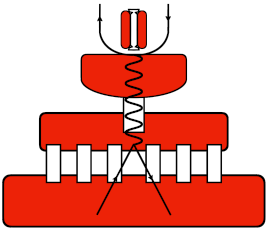Speaker
Description
The KOTO experiment at the J-PARC research facility in Tokai, Japan aims to observe and measure the rare decay of the neutral kaon, $K_L^0 \rightarrow \pi^0 \nu \bar{\nu}$. This decay has a Standard Model (SM) predicted branching ratio (BR) of $(3.00 \pm 0.30) \times 10^{-11}$ [1]. While this decay is extremely rare, it is one of the best decays in the quark sector to probe for new physics beyond the SM due to small theoretical uncertainties. In 2018, KOTO set a new experimental limit of BR($K_L^0 \rightarrow \pi^0 \nu \bar{\nu}$) $<3.0 \times 10^{-9}$ from data collected in 2015, improving the best experimental upper limit by an order of magnitude [2]. From 2016 to 2018, KOTO collected around 1.5 times more data than in 2015, and the analysis of this dataset is currently underway. A critical part of this analysis includes a detailed study of the normalization modes, $K_L^0 \rightarrow 3\pi^0$, $K_L^0 \rightarrow 2\pi^0$, and $K_L^0 \rightarrow 2\gamma$, which are used to calculate the $K_L$ flux and kinematic and veto cut efficiencies. This poster will focus on the 2016-2018 data and the details of the normalization mode studies.
References:
[1] A. Buras et al., JHEP, vol. 1511, no. 033 (2015)
[2] J. K. Ahn et al., Phys. Rev. Lett. vol. 122, p. 021802 (2019)




